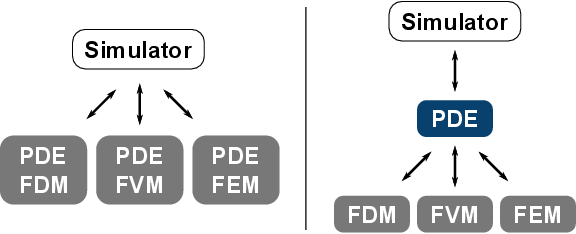
Handling partial differential equations in the computer domain requires means to implement algebraic approximations of these equations while preserving as much information as possible of the original problem [77]. Such algebraic approximations are typically obtained by numerical discretization schemes. For the field of device simulation, the finite difference method, the FVM, and the finite element method ( FEM) are typically employed [1].
Consequently, the simulator design has to support different treatments of a particular PDE with different discretization schemes, resulting in different assembly approaches of the equations system (Figure 4.7). The challenge of supporting different discretization schemes is closely coupled to the raised challenges depicted with the symbolic math component (Section 4.2.3). The key aspect is the availability of an equation object which allows manipulations and evaluations.
